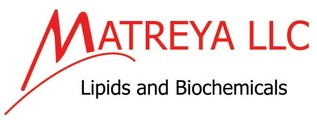服务热线
021-60498804
产品中心
/ Products Classification 点击展开+
| Cat. Number | 1507 |
| Chemical Name | 1507 4682-48-8 乳糖神经酰胺(牛酪乳) Lactosylceramides, (bovine buttermilk) |
| CAS Number | 4682-48-8 |
| Mol. Formula | C53H101NO13 |
| Mol. Weight | 960 |
| Qty 1 |
5mg |
| Appearance | solid |
| Application Notes | 98+%,TLC; identity confirmed by MS |
| Synonym | LC; Lactocerebrosides; CDH; Ceramide beta-lactoside |
| Solubility | chloroform/methanol/DI water, 5:1:0.1 |
| Storage condition | -20℃ |
| References | Application Notes: Lactosylceramide is the precursor of many other glycosphingolipids and also functions as a second messenger and protein receptor, making it a very important organic molecule. Many cellular processes are dependent on lactosylceramide since it is the substrate for neutral oligoglycosylceramides, sulfatides and gangliosides, all of which have their own vital functions. Lactosylceramide also helps to stabilize the lipid membrane, activate receptor molecules and acts as a receptor for certain bacteria and toxins. In animals, where it is found mostly in epithelial and neuronal cells, it is expressed on neutrophils and macrophages where it binds to toxins and bacteria, which are then engulfed and eliminated. Its role as a second messenger has been found to be vital and dysfunctions in its processes can lead to cancer and inflammation since it is critical to neutrophil activity and in activating anti-inflammatory responses.1 Therefore, it is being studied for its use in cancer therapies and as a therapy for other diseases. Other examples of lactosylceramide second messenger functions are tumor necrosis factor alpha and platelet-derived growth factor. A deficiency in the enzyme responsible for hydrolyzing the galactose of lactosylceramide leads to lactosylceramidosis, which is characterized by an accumulation of lactosylceramide that causes a primary neurological disorder.2 Lactosylceramide is also important in the activation of platelet/endothelial cell adhesion molecule-1 which causes adhesion and diapedesis of monocytes/lymphocytes.3
References: |





